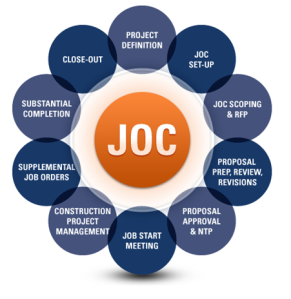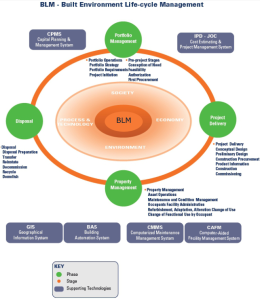On average 25-30%+ of construction project costs are due to inefficient processes. Construction delivery methods that better integrate people and technology such as Integrated Project Delivery (IPD) and Job Order Contracting (JOC)* have proven to help address the issue of poor productivity across the AECOO spectrum (architecture, engineering, construction, operations, owners).
Reducing waste through the use of collaborative construction delivery methods, robust information and data architectures, metrics, and supporting technology is not “rocket science” and we can all make positive impacts beginning today.
Key characteristics of productive and collaborative construction delivery methods are as follows:
- Early involvement of project participants (architects, owners, building users, contractors, engineers, business product manufactures, oversight groups).
- Life-cycle cost vs. first-cost focus.
- Performance and value-based vs. low-bid.
- Robust ontology, standardized data architectures (examples: UNIFORMAT II, MASTERFORMAT2004/2012, RSMeans Cost Data, OMNICLASS).
- Robust collaborative construction delivery methods (IPD – Integrated project delivery, JOC – Job Order Contracting, PPP – Public Private Partnerships).
- Open, cloud computing, object-oriented supporting technology vs. archaic, monolithic technology.
Anecdotally, the main reason BIM has failed to date, and YES is has failed, is the lack of the application of a well defined systems and process approach that incorporates LEAN collaborative construction delivery. BIM is NOT about design. BIM is the life-cycle management of the built environment with a focus upon total cost of ownership throughout all “construction” phases. BIM value is NOT 3D pretty pictures, but data visualization and associated decision support.
It time to put aside our traditional AECOO culture of waste, poor planing, lack of transparency, distinct lack of responsibility on the part of Owners, etc., and make changes that will improve the current economic and environmental landscape.
*Job Order Contracting
Job Order Contracting (JOC) shares many of the features of IPD, but is focused on small- to medium sized renovation and remodel projects that make up the majority of a facility manager’s project portfolio. In many ways JOC is a delivery method ahead of its time, having been introduced in the US Army in the late 1980’s. It is a competitively procured, fixed unit price, indefinite quantity construction procurement and delivery method.
By integrating the design and construction of smaller projects, JOC can compress project timelines to better respond to the day-to-day needs for flexibility within a large facility. The design process is streamlined and involves design professionals at the level appropriate given the project scope; sometimes owner and contractor produce a solid statement of work and simplified design which is the most efficient approach.
Pricing transparency is provided in the form of a unit price book (UPB)—a construction cost database of detailed priced tasks, including construction, maintenance, repair, and renovation workitems and specifications. These tasks form the pricing basis for collaboratively-scoped projects, thus providing price certainty and meeting most procurement regulations. Since JOCs require a highly-performing contractor to provide these additional services, it is most typically procured through a Best Value or Qualifications Based process. Risk is fairly distributed, with the contractor taking on the performance risk of procuring subcontracts and materials within the pre-agreed unit prices, and the owner allowing for annual updates to the price book to reflect construction inflation.




Been following this blog for some time. This one pretty much sums it up. Nice work! Hopefully things start to change. There is still an overfocus on 3D BIM just in design (in Belgium), little transparency, …